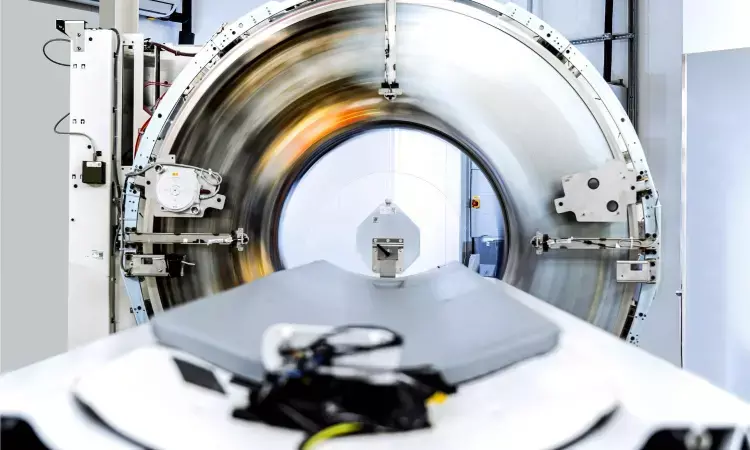- Home
- Medical news & Guidelines
- Anesthesiology
- Cardiology and CTVS
- Critical Care
- Dentistry
- Dermatology
- Diabetes and Endocrinology
- ENT
- Gastroenterology
- Medicine
- Nephrology
- Neurology
- Obstretics-Gynaecology
- Oncology
- Ophthalmology
- Orthopaedics
- Pediatrics-Neonatology
- Psychiatry
- Pulmonology
- Radiology
- Surgery
- Urology
- Laboratory Medicine
- Diet
- Nursing
- Paramedical
- Physiotherapy
- Health news
- Fact Check
- Bone Health Fact Check
- Brain Health Fact Check
- Cancer Related Fact Check
- Child Care Fact Check
- Dental and oral health fact check
- Diabetes and metabolic health fact check
- Diet and Nutrition Fact Check
- Eye and ENT Care Fact Check
- Fitness fact check
- Gut health fact check
- Heart health fact check
- Kidney health fact check
- Medical education fact check
- Men's health fact check
- Respiratory fact check
- Skin and hair care fact check
- Vaccine and Immunization fact check
- Women's health fact check
- AYUSH
- State News
- Andaman and Nicobar Islands
- Andhra Pradesh
- Arunachal Pradesh
- Assam
- Bihar
- Chandigarh
- Chattisgarh
- Dadra and Nagar Haveli
- Daman and Diu
- Delhi
- Goa
- Gujarat
- Haryana
- Himachal Pradesh
- Jammu & Kashmir
- Jharkhand
- Karnataka
- Kerala
- Ladakh
- Lakshadweep
- Madhya Pradesh
- Maharashtra
- Manipur
- Meghalaya
- Mizoram
- Nagaland
- Odisha
- Puducherry
- Punjab
- Rajasthan
- Sikkim
- Tamil Nadu
- Telangana
- Tripura
- Uttar Pradesh
- Uttrakhand
- West Bengal
- Medical Education
- Industry
Photon-counting CT as good as MRI for evaluating hepatic steatosis

USA: For the assessment of hepatic steatosis in obese patients, photon-counting CT (PCCT) performs just as well as MRI (magnetic resonance imaging), a recent study has stated. The study was featured in the European Journal of Radiology on February 8 2023.
"The findings could provide additional and valuable clinical data from many CT (computed tomography) exams that are done each day in busy radiology departments, particularly in obese patients at risk of disease caused by the abnormal accumulation of live fat," the researchers wrote in their study.
The study showed that PCCT provides accurate liver fat fraction quantification, which could improve patients' outcomes by detecting fatty liver disease in earlier stages and providing an opportunity for early treatment initiation.
There has been a rise in hepatic steatosis incidence, which is linked to many health problems, including liver cirrhosis and fibrosis, coronary artery disease, diabetes, and metabolic syndrome. It is typically diagnosed by liver biopsy, an invasive procedure that doesn't allow repetition to monitor the disease's progression or patient's response to treatment. MRI can be used to assess hepatic steatosis but requires unique imaging sequences -- which prolong exam time, can be challenging for larger patients or those with claustrophobia and is not easily accessible.
In this scenario, PCCT could be helpful. Studies have reported that single-energy CT corresponds well to MR spectroscopy and MRI for assessing hepatic steatosis, but the basis for fat quantification is Hounsfield units dependent on the patient size, CT scanner and the absence or presence of iodine-based contrast. On the other hand, PCCT shows promise for fat quantification more accurately as it measures the energy of photons in the x-ray beam differently than conventional CT.
Against the above background, Fides Regina Schwartz from Duke University Health System in Durham, NC, and colleagues aimed to compare liver fat quantification between MRI and photon-counting CT.
Imaging of a cylindrical phantom with inserts comprising six oil-iodine mixtures (0, 10, 20, 30 and 50% fat + 3 mg/mL iodine) and of oil (0, 10, 20, 30, 50 and 100%) was done with a PCCT and a 1.5T MRI system. An IRB-approved prospective clinical assessment included 12 obese patients with known fatty liver disease.
Patients underwent a same-day abdomen clinical MRI and PCCT. Calculation of liver fat fractions was done in four segments (I, II, IVa and VII) using in- and opposed-phase on MRI and iodine-fat tissue decomposition analysis in PCCT. A comparison was made between CT and MRI Fat fractions.
The study revealed the following findings:
· Phantom results revealed no significant differences between the known fat fractions or iodine compared to PCCT-measured concentrations and no statistically notable difference between known and MRI-measured fat fractions.
· The mean fat signal fraction in patients measured on PCCT and MRI was 12.0 ± 9.0% and 13.1 ± 9.9%, respectively, with an average difference of 1.1 ± 1.9% between the modalities.
"The first experience demonstrated promising accuracy of liver fat fraction quantification for PCCT in patients with obesity," the researchers wrote. "This method may improve opportunistic screening for CT in the future."
Preliminary analysis in an obese patient population revealed a good correlation of fat fraction analysis between PCCT and MRI, with an average difference of 1.1% between methods.
Reference:
The study titled "Liver Fat Quantification in Photon Counting CT in head to head comparison with clinical MRI – first experience" was published in the European Journal of Radiology.
DOI: https://doi.org/10.1016/j.ejrad.2023.110734
Dr Kamal Kant Kohli-MBBS, DTCD- a chest specialist with more than 30 years of practice and a flair for writing clinical articles, Dr Kamal Kant Kohli joined Medical Dialogues as a Chief Editor of Medical News. Besides writing articles, as an editor, he proofreads and verifies all the medical content published on Medical Dialogues including those coming from journals, studies,medical conferences,guidelines etc. Email: drkohli@medicaldialogues.in. Contact no. 011-43720751


